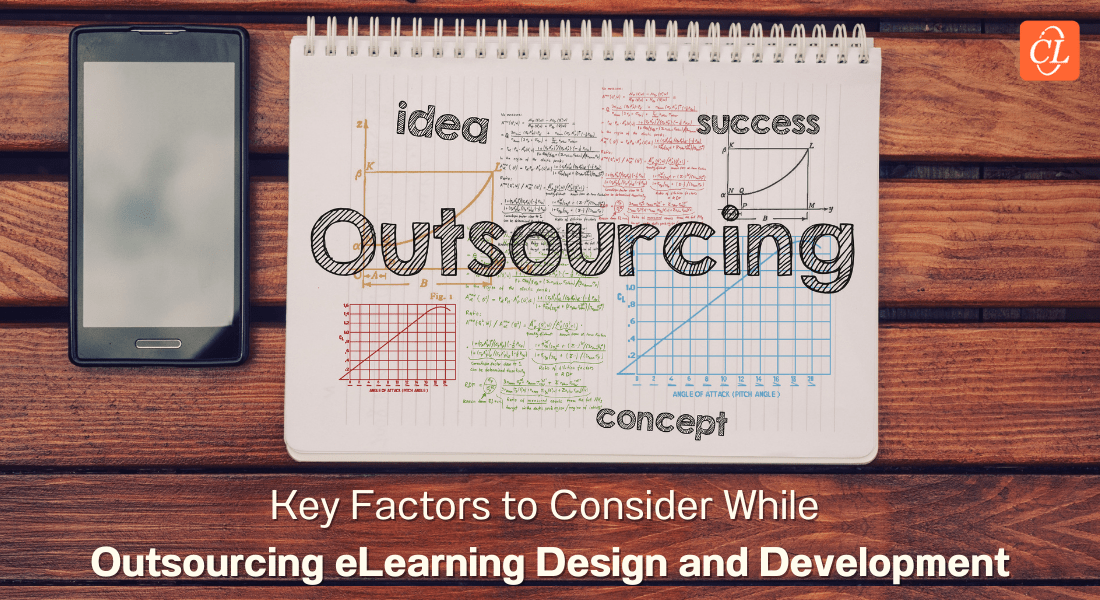E-learning Design and Development – A Snapshot

What is e-learning? It is the use of technology to enable people to learn from anywhere and anytime. Simply put, learning that happens with the use of electronic medium is e-learning. So, does that mean that reading a document on your mobile or computer counts as e-learning? Not by a longshot. For a digital medium to qualify as e-learning, it is essential that the subject matter is made learner-friendly with the application of instructional and visual design principles. Only then can the content act as a standalone ‘teacher’ that facilitates independent learning among your employees.
So how is the bulk subject matter converted into a polished e-learning course? Every e-learning development company follows an approach most appropriate to its capabilities and deliverables. Having said this, every e-learning development company ought to follow a logical sequence of thought and action that is crucial to shape an effective e-learning course. Discussed in this post is a top-level overview of the thought process and some steps that need to be followed for smooth e-learning design and development:
Set Goals
This is the first and the most important hurdle that developers and learning managers need to clear. What will the e-learning course achieve and what are the performance gaps it must address? This means, deciding the behavioral and knowledge changes that will apply to learners, as well as the organizational ramifications that these changes will bring about.
It’s important to have a clear idea of each set of goals, as they are going to serve as a guide throughout the e-learning course design and development process. At the same time, project managers and training managers also need to lay down project milestones or checkpoints that will help you keep the course development on-time and on-task.
Create an Instructional Design Document
An Instructional Design Document or IDD is basically a top-level plan of how the subject matter will be approached from an instructional design point of view. This document dictates how the subject matter will be broken down into courses, modules, and screens. Along with this, it also states the common visual guidelines that your course will follow, like avatars, color theme, design parameters, etc.
It also specifies the instructional design strategy (for example, scenarios, game-based content, guided learning), that are to be used throughout the course. Subject matter experts and stakeholders review this document and give their approval. This ensures that the entire team is on the same page when it comes to the instructional approach of the content.
Scripting and Storyboards
Now that you know what the subject matter is and in what manner you are going to convey it, it is time to get on with the actual content creation. This stage of development can be viewed as filling up the headings of modules with actual subject matter. Based on what was decided in the IDD, instructional designers prepare the storyboard for the entire course.
A storyboard is the blueprint for course development and lays out the basic flow of images with its corresponding text. Then you can proceed to write appropriate audio script and animations each individual screen; do this while keeping in mind the various constraints of your design parameters.
Develop a Prototype
Once the storyboard and content is in place, authoring tool experts proceed to develop a sample course, also called a prototype. Designers usually select a few screens, preferably one of each type (for example static, interactive, assessment, etc.). This sample gives stakeholders a very good idea about the functionality, GUI, and general treatment of the course content. Looking at this, stakeholders provide feedback that the Learning and Development team can rework into the storyboard or the script, accordingly.
A Full Course Without Multimedia Elements
Once your content is locked in, you can go ahead and start the course development in full swing. The entire course is developed at this stage, with only one exception: multimedia elements. Even at this stage, stakeholders tend to make changes in content that must be accommodated. However, changing multimedia elements such as audio and video can become an expensive affair, hence developing these at this stage is usually avoided.
The Final Deliverable
Once the stakeholders finalize the entire course content, you should move ahead with creating all the multimedia elements. This completes the creation of the entire course and puts a pin on the development process. Post this, the SCROM, AICC, or XAPI compliant version of the course is uploaded on the LMS and released to your global employees.
It is always better to break down the entire development process into specific milestones. This helps developers keep the development process in check and allows multiple stakeholders to keep track of the entire process.





![Top 3 Factors That Help Determine eLearning Development Cost [Infographic]](https://blog.commlabindia.com/hubfs/Imported_Blog_Media/elearning-development-key-factors-cost-determination-infographic.png)